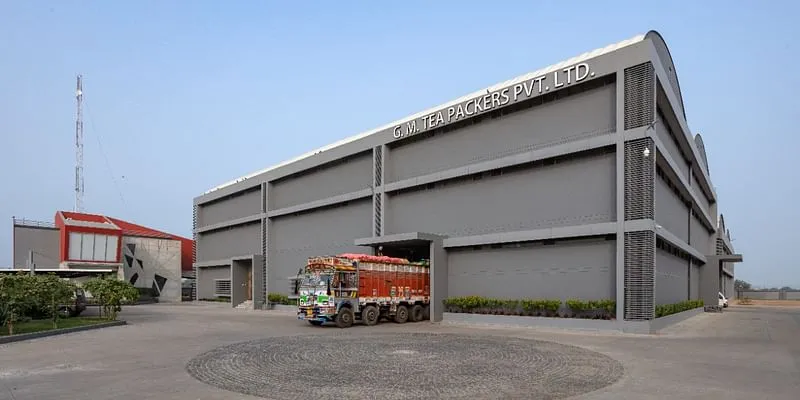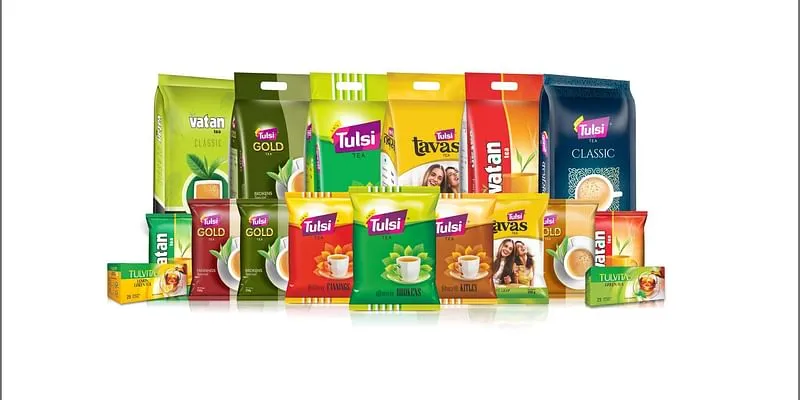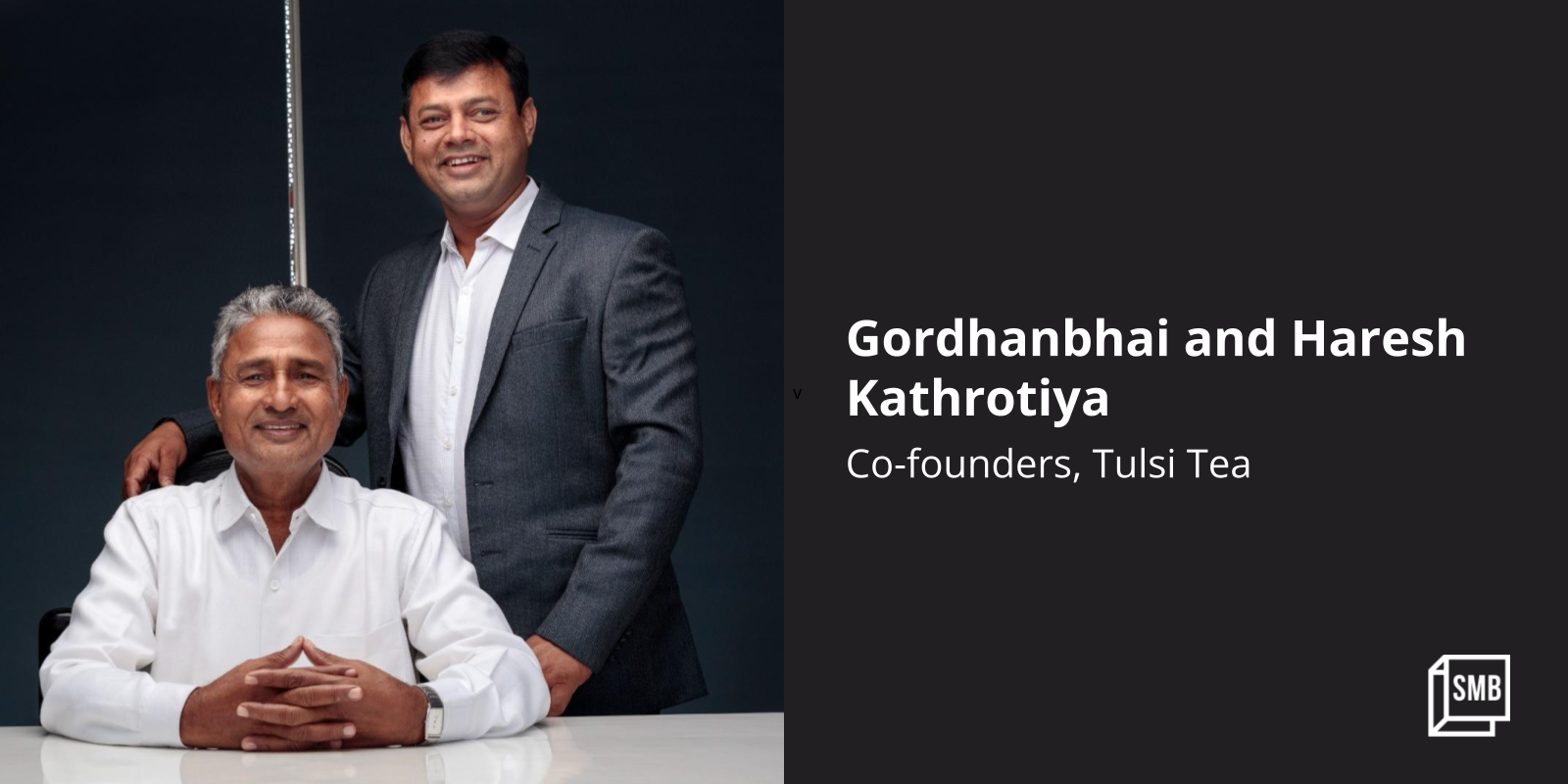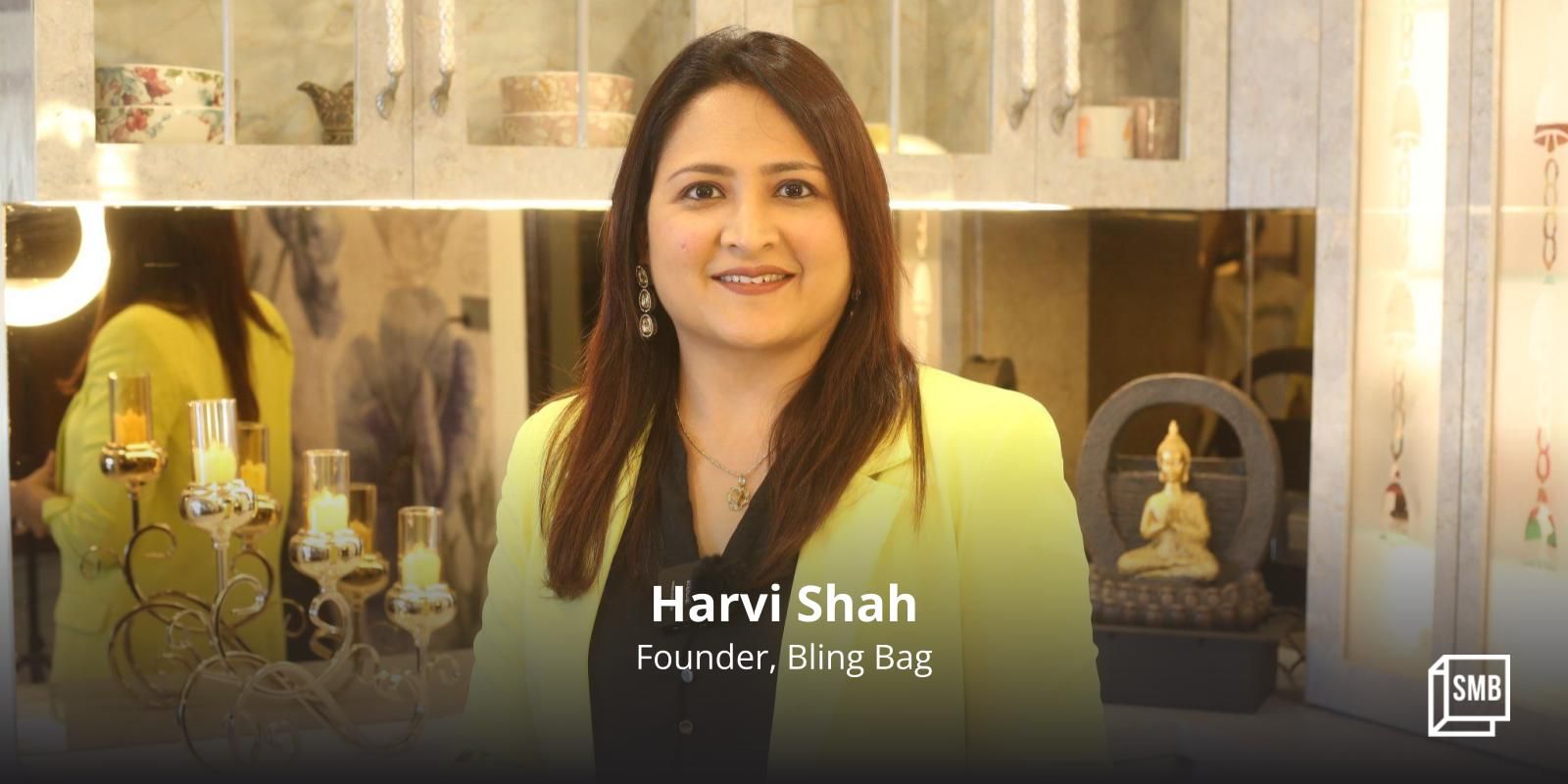From a small provision store, this entrepreneur went on to build a Rs 185 Cr tea retail business
From Chalala town in Gujarat to Amreli and then Ahmedabad, here’s the story of second-generation entrepreneur Haresh Kathrotiya, who built Tulsi Tea, which is now the second largest tea brand in Gujarat.
Haresh Kathrotiya was a teenager when his father, Gordhanbhai Kathrotiya, faced a medical emergency. Haresh had to quit his studies to join his father’s provision store business in Chalala, a small town in Amreli district of Gujarat.
Apart from regular household products, Gordhanbhai also sold loose tea at the provision store, which was sourced from Rajkot and Amreli.
“While our business was small, it made a significant impact on our customers because of the quality of tea. Our tea was loved by everyone in the town,” Haresh tells SMBStory.
It was the early 90s when Gordhanbhai would sell teas wrapped in newspapers. But gradually, as the demand and the income from the tea business grew, he tried to upscale the packaging and increase the business penetration to Amreli district and beyond. However, after he fell ill, the reins of the business were carried by Haresh.
Haresh says he never wanted to work in his father’s setup and wanted to move to a big city and do something bigger.
“I did not want to work in the provision store, but move to Ahmedabad or some other big city of Gujarat and do something else. But family circumstances didn’t allow. When I saw that nothing was in my favour, I put my focus on how we could scale the existing business. I knew that tea was our strong product, and that’s when I got the idea to enter the retail business in an organised way,” Haresh recalls.
More than 30 years on, —under the company GM Tea Packers Pvt Ltd—which was started as a small stint by Haresh, is now the second-largest tea brand in Gujarat, with a turnover of Rs 185.42 crore. Haresh rename the brand as Tulsi Tea after he took over his father's business.
Speaking about how he grew the business from a provision store to building a tea brand, Haresh says, “Dhande ka junoon (business passion)”.

Journey from Chalala to Ahmedabad
Gordhanbhai was trading tea at a small level, but once Haresh entered the business, he saw an opportunity to start a distributorship business out of that.
In 1999, he started experimenting by taking his tea to nearby small villages. In around two quarters, Haresh saw the business picking up, and in a span of three-four years, the tea business and the existing provision store business his father was looking after, were at an equal level.
“Our provision store was started in 1981. The tea business was new, but it was growing vigorously. So, my father and I decided to shut the store and focus completely on scaling and expanding the tea business,” Haresh tells SMBStory.
By 2004, Haresh didn’t want to continue operations in Chalal since logistics cost for sourcing and distribution was expensive. Thus, he moved to Amreli along with the family to set up a new base.
“Till now we were operating in an unorganised way, but after we moved to Amreli, we set up our own packaging unit. By this time, we were in touch with farmlands directly for the sourcing of tea, which helped us in creating more SKUs,” Haresh says.
Around 2008, Tulsi Tea moved beyond the villages of Amreli to cities like Junagarh, Bhavnagar, Porbandar, etc. Instead of operating single-handedly, Haresh tied up with distributors in these cities, which acted as a catalyst for business growth.
“Our business strategy has been to first set firm feet in rural parts of the state and then move to bigger cities. You see, metro or Tier I cities have multiple products to choose from, but rural India doesn’t have many options, and that’s the space we primarily cater to,” Haresh says talking about the business strategy.
From trading at Mumbai’s Chai Galli to becoming a premium tea brand: Society Tea’s multi-crore growth story
From 2005 to 2010, there was 10X expansion in the business. With increasing production, the existing packaging unit became small for Tulsi Tea. In 2013, Haresh set up a new production facility of 1 lakh sq. ft in Bavla Sanand in Ahmedabad district. Since then, Tulsi Tea has been growing by leaps and bounds with 60 tonnes per day production capacity now.

Tulsi Tea products
Growing beyond boundaries
From 2016 to 2018, Haresh streamlined the processes. He started sourcing tea from across Gujarat and farmlands in Guwahati, Siliguri, and Darjeeling. The made the business revenue grow from 12% to 33%.
However, GST implications, demonetisation, and the pandemic posed several challenges, but Haresh says, the backward integration in direct sourcing, distributorship, packaging, and marketing helped them tide through the tough times.
In six years, from 2017 to 2022, the company revenue grew from Rs 73 crore to Rs 200 crore.
According to a report by EMR, the tea market in India is projected to see a CAGR of 4.2% from 2023 to 2028. While Wagh Bakri is one of the best-selling tea brands in Gujarat, Haresh says that TATA is the second largest tea brand in India. However, these big brands have a variety to give to customers. What makes Tulsi Tea stand out is the fact that it caters to a mass audience, specifically in the rural area.
Now, Haresh is planning to take Tulsi Tea beyond Gujarat, to the rural areas of Rajasthan and Madhya Pradesh.
At present, Tulsi Tea has 60 SKUs, ranging in packaging from 25 grams to 1 kg.
Talking about his success mantra, Haresh says that consistency is the key. “We were just consistent in our approach to make the business bigger, keep quality intact, and move to a big city, and we did.”
Edited by Megha Reddy










